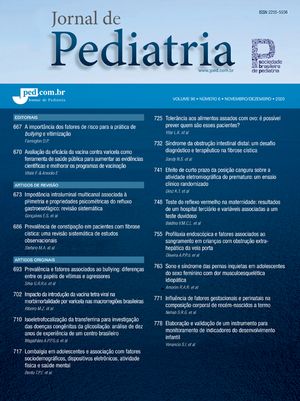
To review cases of vitamin A deficiency and the effects of vitamin A supplementation on child morbidity and mortality.
MethodsArticles published in scientific journals, technical and scientific books, and also publications by international organizations were used as source of information.
ResultsClinical manifestations of xerophthalmia affect the retina (night blindness), the conjunctiva (conjunctival xerosis, with or without Bitot spots), and the cornea (corneal xerosis). Corneal xerosis may lead to corneal ulceration and liquefactive necrosis (keratomalacia). A priori, these signs and symptoms are the best indicators of vitamin A deficiency; they are, however, extremely rare. Laboratory indicators include Conjunctival Impression Cytology and serum retinol concentrations. The World Health Organization (WHO) recommends the use of two biological markers in order to characterize vitamin A deficiency in a given population. If only one biological marker is used, this marker has to be backed up by a set of at least four additional risk factors. Corneal xerophthalmia should be treated as a medical emergency; In the event of suspected vitamin A deficiency, a 200,000 IU vitamin A dose should be administered orally, repeating the dose after 24 hours (half the dose for infants younger than one year). Vitamin A supplementation in endemic areas may cause a 23 to 30% reduction in the mortality rate of children aged between 6 months and five years, and attenuate the severity of diarrhea. The methods for the control of vitamin A deficiency are available in the short (supplementation with megadoses), medium (food fortification), and long run (diet diversification).
ConclusionThere is evidence of vitamin A deficiency among Brazilian children. Pediatricians must be aware of the signs and symptoms of this disease, however sporadic they might be. It is of paramount importance that vitamin A be included in public policy plans so that we can ensure the survival of children.
Avaliar a literatura médica dos últimos 5 anos com relação à obesidade infantil e seu tratamento.
MétodoLevantamento bibliográfico.
ResultadosA obesidade é uma doença crônica, com altos percentuais de insucessos terapêuticos e de recidivas, com sérias repercussões orgânicas e psicológicas, especialmente nas formas mais graves. O tratamento da obesidade costuma ser negligenciado pelos profissionais da saúde e familiares, na expectativa de uma resolução espontânea na adolescência. A chance da criança e do adolescente obesos permanecerem obesos na idade adulta é muito grande, aumentando a morbi-mortalidade para diversas doenças.
ConclusãoCabe ao pediatra a identificação das crianças com maior risco para obesidade já em idades precoces, com a tomada de medidas efetivas de controle, para que o prognóstico seja mais favorável.








